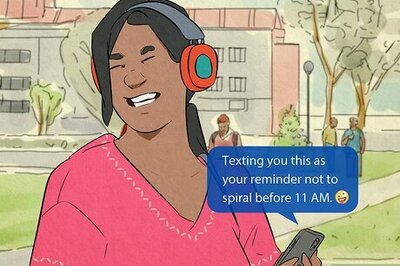
views
A tragic incident from Shahbad Diary area of Outer Delhi shook the entire nation last month. A 16-year-old girl was mercilessly stabbed to death by her 20-year-old boyfriend. What made this gruesome murder even more distressing is the fact that despite the presence of numerous pedestrians at the scene, not a single person stepped forward to intervene, stop the man, offer assistance to the girl, or even alert the police. This shocking lack of action can be attributed to a psychological phenomenon known as the bystander effect. It is a complex concept that sheds light on human behaviour in situations where there is an expectation for someone to react. It refers to the tendency of individuals to refrain from taking action or offering help during an incident or event when surrounded by others. This diffusion of responsibility can have grave consequences, as witnessed in this chilling murder case. Let us explore this concept in more detail:
What is it?
According to the American Psychological Association (APA), the bystander effect is defined as a phenomenon in which individuals refrain from providing necessary assistance in emergency situations, particularly when there are other people present in the same environment. This tendency of non-intervention was initially observed in response to high-profile cases where bystanders failed to intervene or help during emergencies.
Who demonstrated it first?
The concept of the bystander effect gained prominence through the groundbreaking work of social psychologists Bibb Latane and John Darley. Psychology Today, a site dedicated to mental health and behavioural science, shared that this psychological phenomenon was thrust into the public consciousness following the tragic murder of Kitty Genovese in New York City in 1964. The 28-year-old was raped and stabbed to death outside her apartment building. The case of Kitty Genovese became a chilling symbol of collective inaction as it was widely reported that numerous neighbours witnessed the crime but failed to intervene or alert the authorities.
The incident prompted Latane and Darley to conduct research aimed at understanding why people often refrain from offering help to victims in emergency situations, especially when surrounded by others. Their pioneering studies shed light on the psychological and social factors that contribute to the bystander effect.
Why does it happen?
The bystander effect can be attributed to two major factors. The first factor is the diffusion of responsibility that occurs when multiple people are present. In such situations, individuals feel less pressured to take action as they believe the responsibility to intervene is shared among all the observers. This diffusion of responsibility leads to a decreased sense of personal obligation to help, reported Verywell Mind.
The second reason behind the bystander effect is the need to conform to social norms and behave in socially acceptable ways. When bystanders witness others failing to react or provide assistance, they interpret it as a signal that their own response is unnecessary or inappropriate. The behaviour of others serves as a powerful influence on individual decision-making.
Researchers have found that the presence of ambiguity in a crisis further contributes to the bystander effect. In cases like Kitty Genovese’s murder, where there were 38 witnesses, many reported perceiving the situation as a mere “lover’s quarrel” rather than recognising the severity of the crime unfolding before their eyes. In uncertain and chaotic circumstances, bystanders often look to others in the group for cues on how to respond. When they observe a lack of reaction from fellow bystanders, it reinforces the perception that no immediate action is required.
The combination of diffusion of responsibility, conformity to social norms, and ambiguity in the situation creates a powerful psychological barrier that inhibits individuals from taking action as bystanders. Understanding these underlying factors can help raise awareness about this psychological phenomenon and encourage the development of strategies to overcome it.


















Comments
0 comment